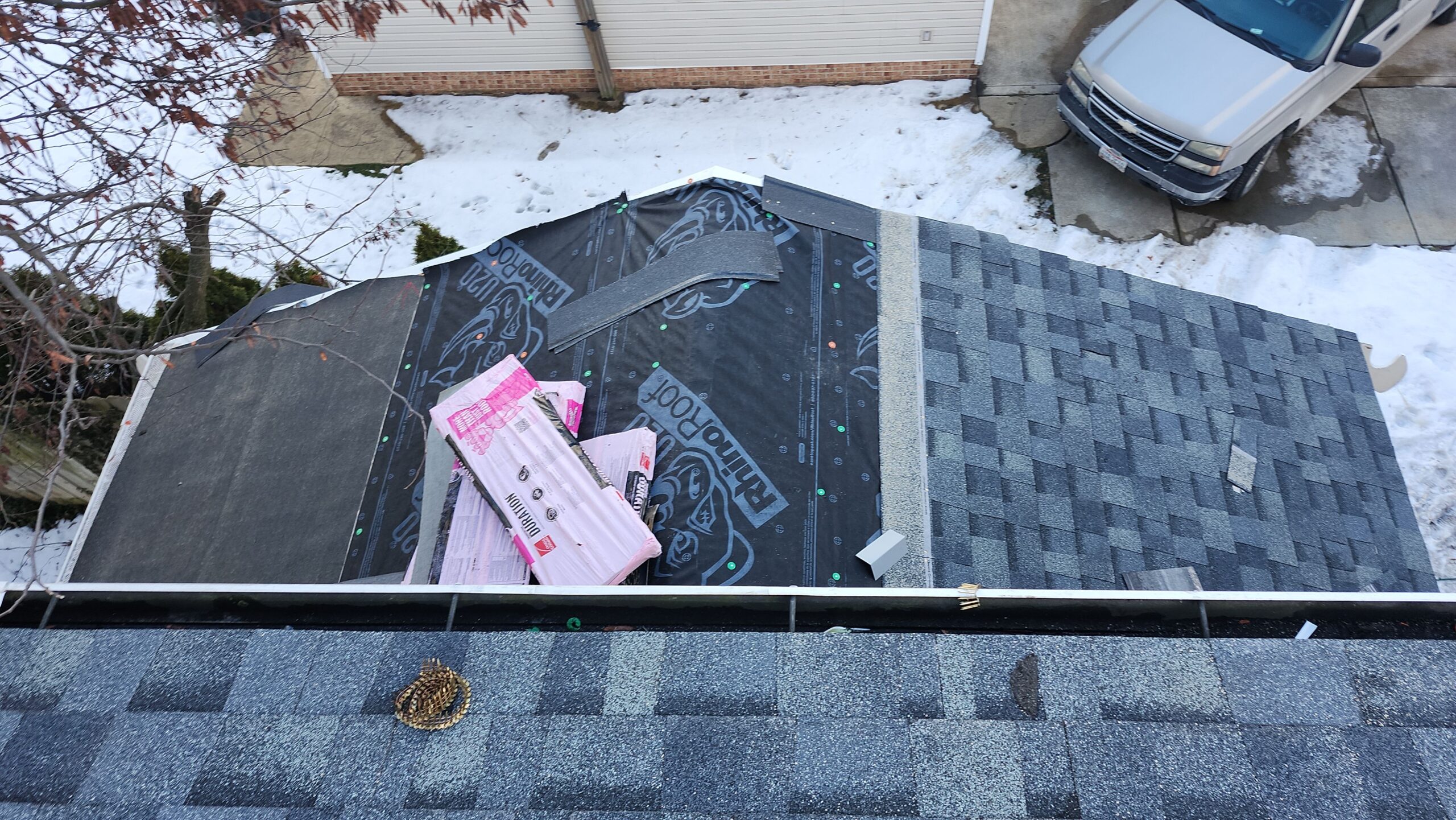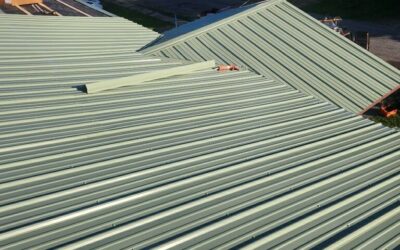What Are the Different Parts of a Roof?
The roof is one of the most important structural components of any building. It protects the interior from the elements, provides insulation, and contributes to the overall aesthetic and curb appeal of a home. Whether you’re building a new home or replacing an old roof, understanding the different parts of a roof is essential for making informed decisions about repairs, maintenance, or roof replacement.
If you’re a homeowner in Cleveland, Lakewood, Medina, or anywhere in Northeast Ohio, where severe weather conditions are common, it’s especially important to understand how your roof functions and what each part contributes to its performance. Whether you’re dealing with asphalt shingles, metal roofing, or slate, the core components of a roof play an integral role in its durability and functionality.
In this blog post, we will explore the different parts of a roof, what each part does, and how they contribute to the overall performance of your roofing system. We will break it down into several sections so you can better understand the anatomy of your roof.
1. Roof Decking (Sheathing)
What is Roof Decking?
The roof decking, also called sheathing, is the structural foundation of the roof. It is typically made of plywood or oriented strand board (OSB) and lies directly on top of the roof rafters. The decking provides a solid surface for the roofing materials (like shingles, tiles, or metal panels) to be attached.
What Does Roof Decking Do?
The main function of the roof decking is to provide support for the entire roofing structure. It acts as the base layer and helps distribute the weight of the roofing materials across the roof’s framework. The roof decking also serves as a surface to which the underlayment, flashing, and other components are fastened.
Why is it important?
- Support: It is essential for supporting the weight of your roofing materials and any additional load like snow or debris.
- Water Protection: The decking acts as an additional barrier against water leakage when properly sealed.
In areas like Cleveland Heights or Chardon, where heavy snow and rain are common, the roof decking must be durable enough to handle the additional weight of snow accumulation or runoff from rain.
2. Roof Rafters and Trusses
What Are Roof Rafters and Trusses?
Roof rafters and trusses are the structural framework that supports the roof deck. Rafters are the beams that extend from the top of the exterior walls to the ridge, providing the framework for the roof’s slope. Trusses, on the other hand, are pre-fabricated structures made of wood or metal that form the roof’s skeleton.
What Do Rafters and Trusses Do?
- Support: Rafters and trusses provide support for the roof decking and distribute the weight of the roof evenly.
- Shape and Structure: Rafters define the slope or pitch of the roof and determine its overall shape. Trusses help form a uniform, reliable framework that can bear the weight of the roof and provide more stability for wider roofs.
- Load Distribution: Both rafters and trusses are designed to help distribute the weight of the roof to the walls of the building, preventing any part of the roof from collapsing or becoming damaged.
If you’re in a region like Medina or Pepper Pike, where strong winds and storms are common, your roof’s rafters and trusses must be built to withstand those forces and maintain structural integrity.
3. Roof Underlayment
What is Roof Underlayment?
The roof underlayment is a layer of material that is installed directly on top of the roof decking. It acts as an extra waterproof barrier, providing protection from water infiltration, wind, and other environmental elements. Underlayment is typically made from materials like felt, synthetic sheets, or rubberized asphalt.
What Does Roof Underlayment Do?
- Water Resistance: The underlayment prevents water from seeping into the roof decking in case the outer layer of roofing materials is damaged or compromised.
- Protection Against Wind: It also serves as a secondary layer of protection against wind and debris.
- Temperature Regulation: Some types of underlayment provide additional insulation and help regulate temperature fluctuations in the attic.
In areas like Euclid or Willoughby, where severe storms or heavy rainfall are common, having a high-quality underlayment is essential for preventing water infiltration and keeping your home protected.
4. Roof Flashing
What is Roof Flashing?
Flashing refers to thin strips of metal (such as aluminum, copper, or steel) that are installed in specific areas of the roof where there is a high risk of water penetration. Common places for flashing include roof valleys, chimneys, skylights, vents, and around other protrusions or intersections.
What Does Roof Flashing Do?
- Waterproofing: Flashing serves to direct water away from seams or joints where different roof components meet, preventing leaks in vulnerable areas.
- Protection at Roof Penetrations: Areas like chimneys, skylights, and vents are common points where water can enter the roof. Flashing helps seal these points to prevent water from infiltrating.
- Durability: Flashing is designed to withstand the elements, especially in areas where roof materials meet different surfaces, like walls or other roofs.
In regions like Chagrin Falls and Chardon, where heavy snow and ice dams are common in the winter, flashing plays an important role in ensuring that water doesn’t seep into the structure of the roof, potentially causing damage.
5. Roof Ridge and Ridge Vent
What is a Roof Ridge?
The roof ridge is the highest point of the roof where the two sides of the roof meet. It runs horizontally along the top of the roof and is typically covered with ridge shingles or ridge caps, which are designed to protect the ridge from water infiltration.
What Does the Roof Ridge Do?
- Structural Support: The ridge provides structural support and defines the peak of the roof, contributing to its overall shape.
- Ventilation: The roof ridge is an important part of the roof’s ventilation system, especially when combined with a ridge vent.
What is a Ridge Vent?
A ridge vent is a long, narrow vent installed along the peak of the roof. It allows hot, humid air to escape from the attic, promoting proper airflow and preventing heat buildup. Ridge vents work in conjunction with soffit vents to create a natural ventilation system that helps regulate temperature and moisture in the attic.
Why Are They Important?
Proper ventilation is crucial in preventing heat buildup, which can cause damage to roofing materials and reduce the lifespan of your roof. Adequate ventilation also helps prevent the growth of mold and mildew, which can occur when moisture is trapped in the attic.
In cities like Madison, Willoughby, and Lakewood, proper ventilation is crucial in reducing the impact of extreme temperatures and humidity on your roof’s performance.
6. Soffits and Fascia
What Are Soffits and Fascia?
- Soffits: The soffit is the material that covers the underside of the roof’s overhang. It is typically vented to allow air circulation in the attic.
- Fascia: The fascia is the board that runs along the edge of the roof, where the roof meets the exterior walls. It supports the bottom row of shingles and is often used to secure the gutters.
What Do Soffits and Fascia Do?
- Protection: Soffits help protect the attic from moisture and debris while allowing for proper ventilation. Fascia provides a clean, finished look at the edge of the roof and supports gutters.
- Aesthetic Appeal: Both soffits and fascia contribute to the overall curb appeal of your home, enhancing the look of the roofline and giving it a polished finish.
In areas with heavy rainfall, like Wickliffe or Gates Mills, fascia and soffits also help protect your home from water damage by ensuring that gutters are properly installed and functioning to redirect water away from the roof.
7. Roof Shingles or Roofing Material
What Are Roof Shingles?
Roof shingles are the most visible part of the roof, and they are what people typically think of when they refer to roofing. Shingles come in a variety of materials, including asphalt, metal, wood, slate, and tile, and they serve as the primary layer of protection against rain, snow, and other elements.
What Do Roof Shingles Do?
- Protection: Shingles protect the roof deck and underlayment from the elements.
- Aesthetic Appeal: Shingles contribute to the overall aesthetic of your home, and there are many different colors and styles to choose from.
- Water Resistance: Shingles are designed to shed water and prevent it from penetrating the roof structure.
Whether you’re in Cleveland, Euclid, or Beachwood, the right choice of shingles can improve your home’s curb appeal and provide long-lasting protection.
Conclusion
Understanding the different parts of your roof is key to maintaining its integrity and ensuring that your home remains safe and protected. From the roof decking and rafters to the shingles and flashing, each part plays an important role in the overall performance of your roofing system.
In regions like Cleveland Heights, Pepper Pike, and Chagrin Falls, where severe weather conditions are common, having a solid and well-maintained roof is crucial for safeguarding your home and your family. If you notice signs of damage or aging in any of these roof components, it may be time to consult a professional roofing company like S&K Construction and Remodeling LLC to assess the situation and recommend the best course of action for roof repairs or replacement.
Proper roof maintenance can extend the life of your roof and help prevent expensive repairs, so don’t wait until problems arise. Reach out today to ensure your roof is in top shape!
 (440) 307-2060
(440) 307-2060


